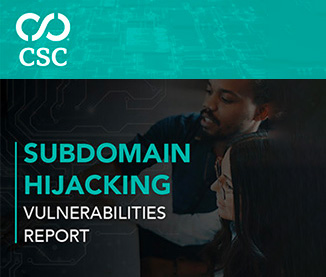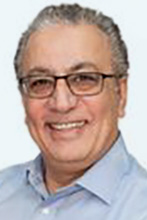

Brand Protection |
Sponsored by |

|




 As the new-gTLD programme - the ICANN initiative to add a large number of new domain extensions (top-level domains, or TLDs) to the Internet - continues to see ongoing launches of new TLDs, we conduct a new retrospective of the activity landscape of the most recent extensions to have been launched. This new study focuses on all new-gTLDs to have entered their Sunrise or General Available periods since the start of 2023, following a previous overview by Stobbs of the full new-gTLD landscape.
As the new-gTLD programme - the ICANN initiative to add a large number of new domain extensions (top-level domains, or TLDs) to the Internet - continues to see ongoing launches of new TLDs, we conduct a new retrospective of the activity landscape of the most recent extensions to have been launched. This new study focuses on all new-gTLDs to have entered their Sunrise or General Available periods since the start of 2023, following a previous overview by Stobbs of the full new-gTLD landscape.
 I recently had the opportunity to speak on a podcast with Dave Bittner at CyberWire to discuss how .AI is giving cybercriminals a new avenue to take advantage of some of the largest companies in the world based on research findings from CSC's 2023 Domain Security Report. Below is a summary of the key points discussed during this podcast.
I recently had the opportunity to speak on a podcast with Dave Bittner at CyberWire to discuss how .AI is giving cybercriminals a new avenue to take advantage of some of the largest companies in the world based on research findings from CSC's 2023 Domain Security Report. Below is a summary of the key points discussed during this podcast.
 In the last year, the company that runs the Turkish Domain Registry has made many changes to how the extension is run. First, it has a brand new portal for registrars to interact with, liberalizing the extension .COM.TR, so registrants are no longer required to meet local presence rules, and it has launched a new dispute process to help brand holders recover domain names.
In the last year, the company that runs the Turkish Domain Registry has made many changes to how the extension is run. First, it has a brand new portal for registrars to interact with, liberalizing the extension .COM.TR, so registrants are no longer required to meet local presence rules, and it has launched a new dispute process to help brand holders recover domain names.
 This case had a bit of a weird result -- even though the brand owner had a mark that was 20 years old, and the alleged cybersquatter, in the meantime, acquired a domain name on the open market identical to that mark, because the domain name was first registered (by an unrelated party) before the brand owner's trademark rights arose, there was no relief under federal trademark law.
This case had a bit of a weird result -- even though the brand owner had a mark that was 20 years old, and the alleged cybersquatter, in the meantime, acquired a domain name on the open market identical to that mark, because the domain name was first registered (by an unrelated party) before the brand owner's trademark rights arose, there was no relief under federal trademark law.
 It seems that every day, a new artificial intelligence (AI) capability emerges, posing exciting possibilities for technological advancements -- but also great potential to equal or greater risks. Cybercriminals have taken notice of this rapid surge in the popularity of AI technologies and are attempting to take advantage.
It seems that every day, a new artificial intelligence (AI) capability emerges, posing exciting possibilities for technological advancements -- but also great potential to equal or greater risks. Cybercriminals have taken notice of this rapid surge in the popularity of AI technologies and are attempting to take advantage.
 Domain names give your intellectual property visibility, as well as provide function for your company's infrastructure. Vital domain names are simply too important to be left exposed. To protect them, you can add extra layers of security to your digital brand with easy, secure, server-level protection in addition to multi-level locks that combat domain name system (DNS) hijacking and protect against unauthorized changes and deletions to your critical domain names.
Domain names give your intellectual property visibility, as well as provide function for your company's infrastructure. Vital domain names are simply too important to be left exposed. To protect them, you can add extra layers of security to your digital brand with easy, secure, server-level protection in addition to multi-level locks that combat domain name system (DNS) hijacking and protect against unauthorized changes and deletions to your critical domain names.
 Companies today manage hundreds or even thousands of domain names that support their organization, their visitors from different countries, and their brands and trademarks. They register misspelling of their names as a defensive strategy to protect their brand from online fraud, or from losing traffic to simple user typos.
Companies today manage hundreds or even thousands of domain names that support their organization, their visitors from different countries, and their brands and trademarks. They register misspelling of their names as a defensive strategy to protect their brand from online fraud, or from losing traffic to simple user typos.
 In this article, I present an overview of a series of 'proof-of-concept' studies looking at the application of domain-name entropy as a means of clustering together related domain registrations, and serving as an input into potential metrics to determine the likely level of threat which may be posed by a domain.
In this article, I present an overview of a series of 'proof-of-concept' studies looking at the application of domain-name entropy as a means of clustering together related domain registrations, and serving as an input into potential metrics to determine the likely level of threat which may be posed by a domain.
 On the sunny beaches of Anguilla -- a small island of just 35 square miles -- I'm sure artificial intelligence (AI) is the last thing people are thinking about. The primary industries of Anguilla, set in the Leeward islands in the Caribbean, are tourism and offshore banking. However, this nation has been assigned the country code top-level domain (ccTLD) .AI -- which is being repurposed to represent artificial intelligence.
On the sunny beaches of Anguilla -- a small island of just 35 square miles -- I'm sure artificial intelligence (AI) is the last thing people are thinking about. The primary industries of Anguilla, set in the Leeward islands in the Caribbean, are tourism and offshore banking. However, this nation has been assigned the country code top-level domain (ccTLD) .AI -- which is being repurposed to represent artificial intelligence.
 In 2014, computer scientist Gavin Wood coined the term "Web 3.0." The phrase, which has now been shortened to "Web3", refers to the third generation of the internet that's designed to be truly decentralised and free from a central authority. Web3 has the potential to add real-world value for businesses by creating additional avenues to reach consumers. However, owing to its less regulated nature, brands also have the potential to be taken advantage of both by users and by the providers in the space.
In 2014, computer scientist Gavin Wood coined the term "Web 3.0." The phrase, which has now been shortened to "Web3", refers to the third generation of the internet that's designed to be truly decentralised and free from a central authority. Web3 has the potential to add real-world value for businesses by creating additional avenues to reach consumers. However, owing to its less regulated nature, brands also have the potential to be taken advantage of both by users and by the providers in the space.